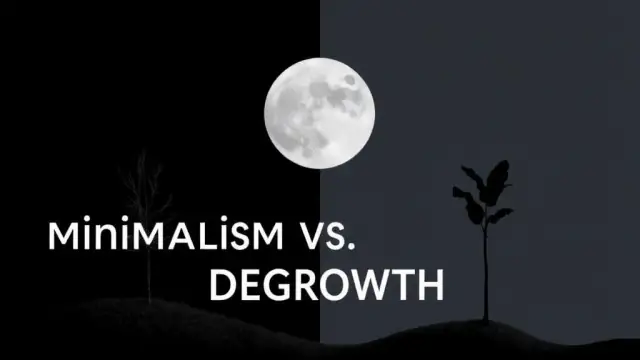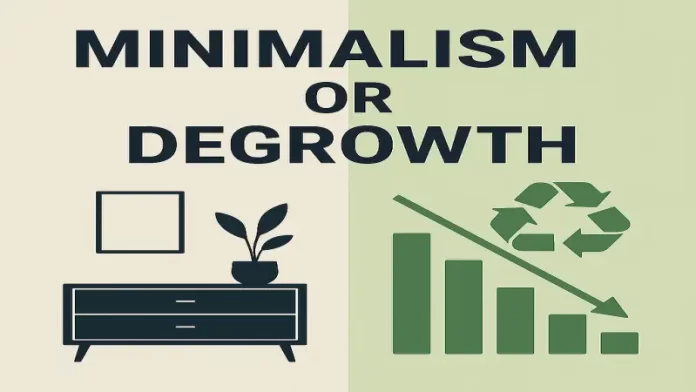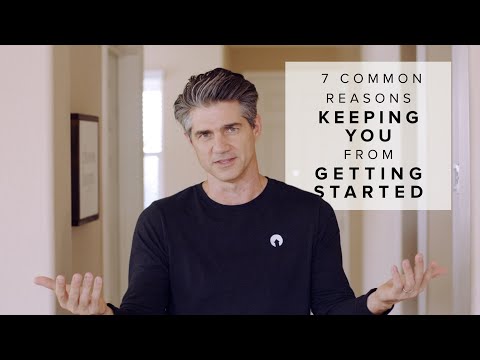A question thats probably crossed the minds of anyone feeling that rising tide of eco-anxiety: Minimalism vs. Degrowth which one is going to slam the brakes on environmental destruction and save the planet faster? It’s a compelling question, especially This year, with the climate headlines feeling more urgent than ever. Are we looking at a personal decluttering revolution, or do we need to fundamentally redesign the entire economic engine?
Grab a cuppa, because this isn’t a simple A-B answer. We’re talking about two distinct philosophies, both with passionate advocates, both aiming for a healthier relationship with our planet. But do they work at the same speed, or even on the same track? Lets unpack this.
Table of Contents
What’s the Skinny on Minimalism?
You’ve seen the Insta feeds, the documentaries. Minimalism, at its core, is about living intentionally with only the things you truly need or deeply love. It’s a conscious effort to opt out of the relentless cycle of consumerism, to declutter not just your physical space but often your mental space too. Think Marie Kondo, but with a potential planetary bonus.
How Minimalism Could Help the Planet:
- Reduced Consumption: This is the biggie. Minimalists, by definition, buy less stuff. Less demand for new products should mean less resource extraction, less energy used in manufacturing, and less pollution. Myriad resources are consumed to produce every little trinket.
- Less Waste: Fewer possessions often translate to less ending up in landfills. Minimalists tend to be more mindful about repairing, repurposing, or responsibly disposing of items.
- Smaller Personal Footprint (Potentially): By consuming less, individuals can reduce their personal carbon footprint and overall environmental impact. This often leads to a preference for experiences over material goods.
- Shift in Values: It encourages a move away from material wealth as a measure of success, towards values like freedom, time, and experiences. This cultural shift could have wider ripples.
But Here’s the Rub – Limitations of Minimalism Alone:
- Individual vs. Systemic: Minimalism is primarily an individual lifestyle choice. While powerful on a personal level, its aggregate impact depends on mass adoption. Can enough people become hardcore minimalists to make a global dent if the underlying economic system still champions endless production? The focus are primarily on individual choices.
- The “Minimalist Aesthetic” Trap: Sometimes, minimalism can be co-opted by consumerism itself think buying new, expensive, “minimalist-branded” items. It can become another aesthetic to consume, rather than a genuine reduction.
- Rebound Effects: If minimalism frees up disposable income, where does that money go? If it’s spent on more carbon-intensive activities (like frequent long-haul flights), the net benefit could be reduced.
- Sufficiency is Subjective: One person’s “enough” is another’s “excess.” Without a broader framework, individual efforts might not be ambitious enough to meet planetary boundaries.
Minimalism is a fantastic starting point for questioning our relationship with “stuff” and reducing personal impact. It empowers individuals. But is it “fast” enough to tackle the scale of the global crisis on its own? Probably not, if we’re being brutally honest.

Enter Degrowth: The Elephant in the Economic Room
Now, let’s talk about Degrowth. This is a much bigger, more systemic, and often more controversial idea. Degrowth isn’t just about individual choices; it’s a proposed societal and economic transformation. It calls for a planned and equitable downscaling of production and consumption in wealthy nations to reduce our collective environmental footprint to sustainable levels.
Crucially, degrowth is NOT the same as a recession. A recession is an unplanned, chaotic economic contraction that causes widespread hardship. Degrowth, in theory, would be a deliberate, democratically managed transition focused on improving well-being, social equity, and ecological health, not just shrinking GDP.
How Degrowth Aims to Save the Planet:
- Systemic Reduction: Degrowth directly challenges the paradigm of endless economic growth, which is a primary driver of resource depletion and emissions. It targets the scale of the economy.
- Focus on Sufficiency & Well-being: It proposes redirecting economic activity towards meeting human needs and enhancing quality of life (healthcare, education, community, leisure) rather than accumulating material wealth beyond what’s necessary. This often involve different metrics than GDP.
- Planetary Boundaries: The core idea is to bring human economic activity back within the Earth’s ecological limits. This means respecting limits on resource use, pollution, and biodiversity loss.
- Equity: A key tenet of degrowth is social justice, ensuring that the transition is fair both within and between countries. This could mean wealth redistribution, shorter working weeks, and stronger public services.
The Hurdles for Degrowth – And They’re Big:
- Political Feasibility: Lets be real: suggesting a planned reduction in economic output is a tough sell in a world obsessed with GDP growth. Convincing a global populace, especially policymakers embedded in the current system, are a monumental task.
- Implementation Challenges: How do you actually do degrowth equitably? What mechanisms would be used? How do you avoid negative impacts on employment and living standards during the transition? These are massive, complex questions.
- Fear of Austerity: Many people equate “degrowth” with a decline in quality of life, a return to some primitive state. Proponents argue this isn’t the case it’s about redefining “the good life” but that narrative shift is difficult.
- Global Coordination: For degrowth to be truly effective without just offshoring environmental damage, some level of international cooperation would be essential. Good luck with that in the current geopolitical climate.
Degrowth offers a potentially more fundamental solution to the environmental crisis by addressing the systemic drivers. But its path to implementation is long, winding, and fraught with political and social obstacles.
Minimalism vs. Degrowth: The “Faster” Race
So, back to the burning question: which saves the planet faster?
- For individual action to begin: Minimalism wins, hands down. You can start decluttering and consuming more consciously today. It’s immediately accessible. The initial changes can be rapid.
- For systemic, large-scale impact: Degrowth, if successfully implemented, would be far more impactful and arguably “faster” at bending the curve of planetary destruction. It addresses the root causes in a way that individual minimalism, even widespread, might not. The problem is that “if.”
- The Illusion of Speed: What if the “faster” individual approach (minimalism) only nibbles at the edges of a colossal problem, while the “slower” systemic approach (degrowth) is the one that actually has a chance of solving it fundamentally? Sometimes, the slower, deeper path is the one that gets you to the right destination.
It feels like we’re comparing apples and oranges, or maybe a bicycle and a high-speed rail project. One you can hop on right now and make personal progress; the other requires massive infrastructure change but could transport an entire society to a different place.
Are They Opponents or Unlikely Allies?
Here’s where it gets interesting: Minimalism and Degrowth don’t have to be in opposition. In fact, they could be highly complementary.
- Minimalism as an Entry Point: Practicing minimalism can open people’s eyes to the problems of overconsumption and the emptiness of materialism. This personal awakening might make them more receptive to the broader societal changes proposed by degrowth. It builds a culture of sufficiency from the ground up. Lots of peoples find this to be true.
- Degrowth Fostering Minimalist Values: A degrowth society, with its emphasis on well-being over material accumulation, shorter working hours, and stronger communities, would likely naturally encourage and support more minimalist lifestyles. If things are built to last, shared more readily, and work isn’t solely about earning more to buy more, minimalism becomes the logical norm, not a counter-cultural statement.
- Shared Critique of Consumerism: Both movements fundamentally critique the consumerist mindset that drives so much environmental damage. They both ask: “How much is truly enough?”
Perhaps widespread adoption of minimalist principles could create the cultural and political space needed for degrowth policies to gain traction. Conversely, degrowth policies could make minimalist living the easy, default option.
Beyond the Binary: It’s Not Just One or the Other
It’s tempting to look for a single “silver bullet” solution, but the reality of the climate and ecological crisis is far too complex for that. Neither minimalism nor degrowth alone is likely to be the sole savior. Other crucial elements include:
- Technological Innovation: Sustainable energy, circular economy tech, regenerative agriculture, etc.
- Strong Policies: Carbon pricing, regulations on polluting industries, investment in green infrastructure.
- Community Action: Local initiatives, transition towns, cooperative models.
- Activism and Advocacy: Pushing for political change and holding power accountable.
These all need to work in concert.
So, Which Path to a Healthier Planet?
The honest answer to “Minimalism vs. Degrowth: Which saves the planet faster?” is: it’s not a race between two separate tracks, but a call for a multi-layered approach.
Minimalism offers an immediate, empowering path for individuals to reduce their impact, question consumerism, and live more intentionally. It’s something you can start right now. It’s a vital piece of the puzzle, fostering a mindset shift that is crucial.
Degrowth provides a more comprehensive, albeit challenging, framework for the deep systemic changes required to bring our entire economy within planetary boundaries. It’s the bigger, tougher, longer-term conversation we must have if we’re serious about long-term sustainability. It addresses the scale of the problem.
The “fastest” way forward likely involves embracing minimalist principles in our own lives while simultaneously advocating for and working towards the systemic shifts envisioned by degrowth. We need to walk and chew gum, as they say. Individual actions build awareness and reduce personal harm; systemic change addresses the structures that perpetuate the crisis.
Ultimately, saving the planet requires a radical reimagining of “the good life” one that values well-being, community, and ecological health over endless material accumulation. Both minimalism and degrowth offer valuable maps for that journey. Every actions count towards building that future. The question isn’t which single path is faster, but how we can accelerate our progress down all necessary paths, simultaneously.


